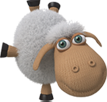TMJ -- Temporo-Mandibular Joint
Sleeping on your side effects the degree of grinding that may occur. Below is info on description of what occurs.
(TMJ) reacts from the joint where the mandible (the lower jaw) joins the temporal bone of the skull, immediately in front of the ear on each side of your head. A small disc of cartilage separates the bones, much like in the knee joint, so that the mandible may slide easily; each time you chew you move it. But you also move it every time you talk and each time you swallow (every three minutes or so). It is, therefore, one of the most frequently used of all joints of the body and one of the most complex.
To accommodate such forces and to prevent too much wear and tear, the cartilage between the mandible and skull normally provides a smooth surface, over which the joint can freely slide with minimal friction. Therefore, the forces of chewing can be distributed over a wider surface in the joint space and minimize the risk of injury. In addition, several muscles contribute to opening and closing the jaw and aid in the function of the TMJ.
Symptoms include
- Ear pain
- Sore jaw muscles
- Temple and cheek pain
- Jaw popping and clicking
- Locking of the Jaw
- Difficulty in opening the mouth fully
- Frequent head and neck aches
Because TMJ symptoms often develop in the head and neck, otolaryngologists are appropriately qualified to diagnose TMJ problems. Proper diagnosis of TMJ begins with a detailed history and physical, including careful assessment of the teeth occlusion and function of the jaw joints and muscles. If the doctor diagnoses your case early then simple, home remedies should treat it successfully. Oftentimes doctors will suggest a more supportive pillow. The Better Sleep Pillow is a great remedy to TMJ. The Better Sleep Pillow's memory foam construction is designed to properly support the spine and reduce TMJ pain. So order the Better Sleep Pillow now and start the path to treatment.








